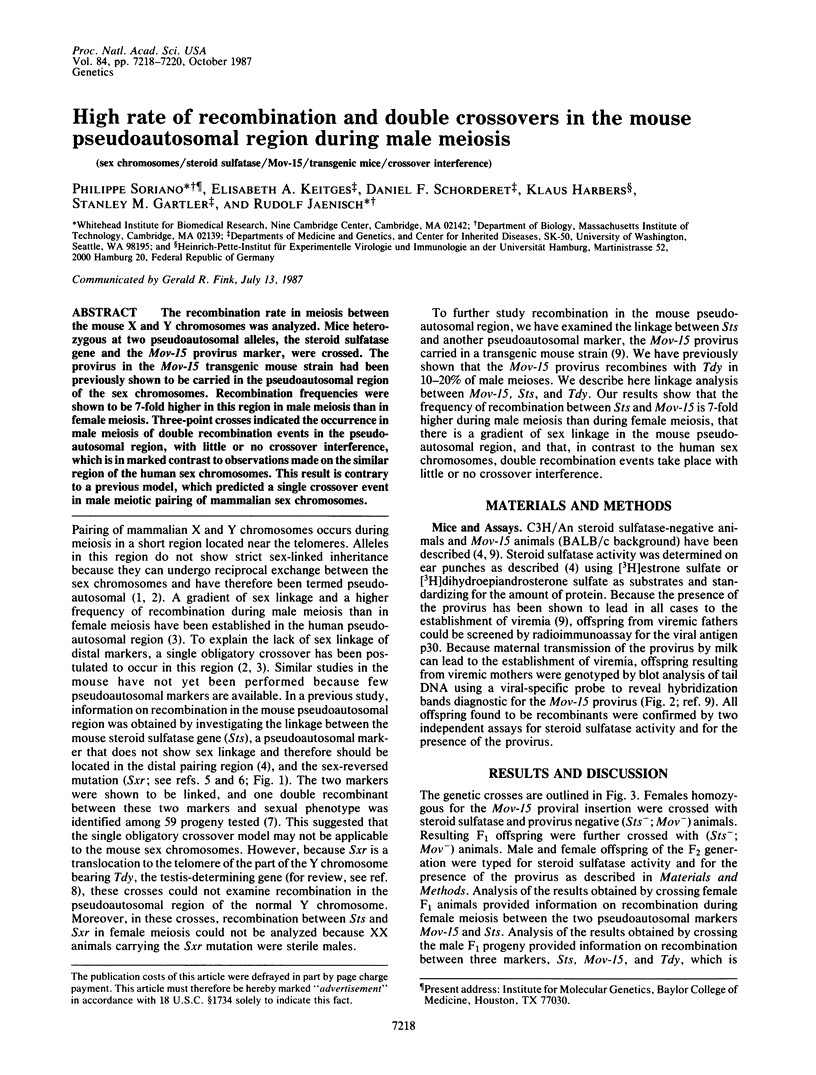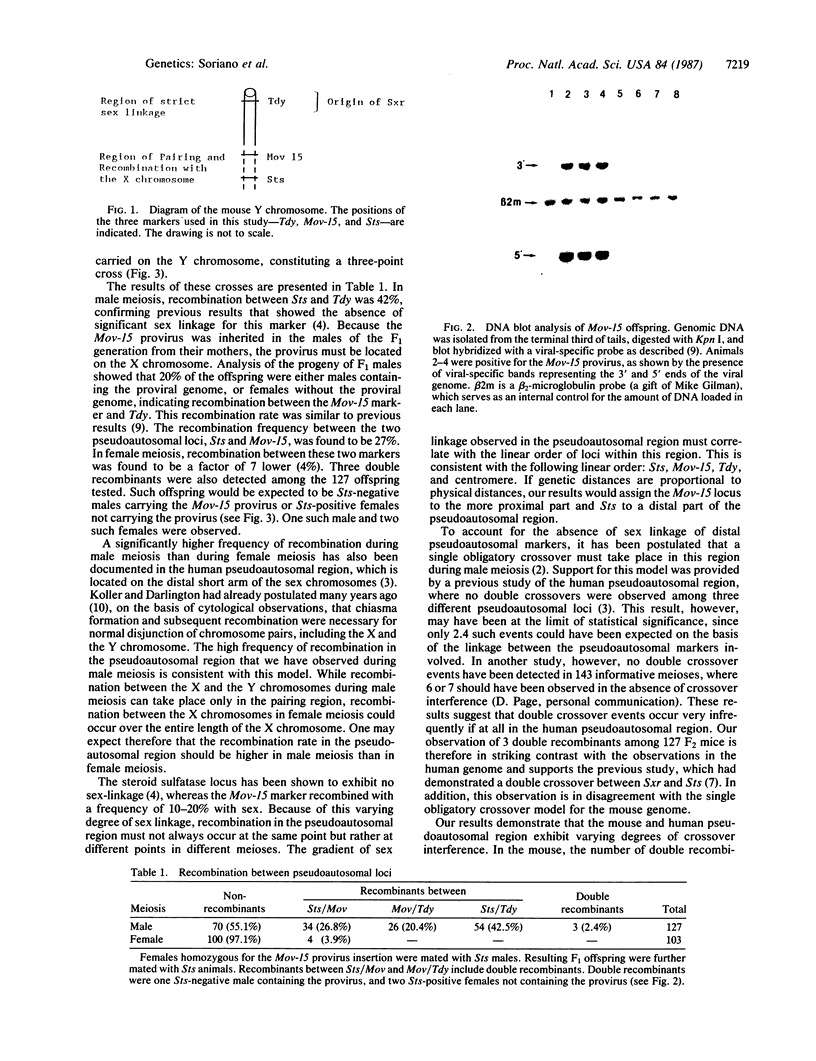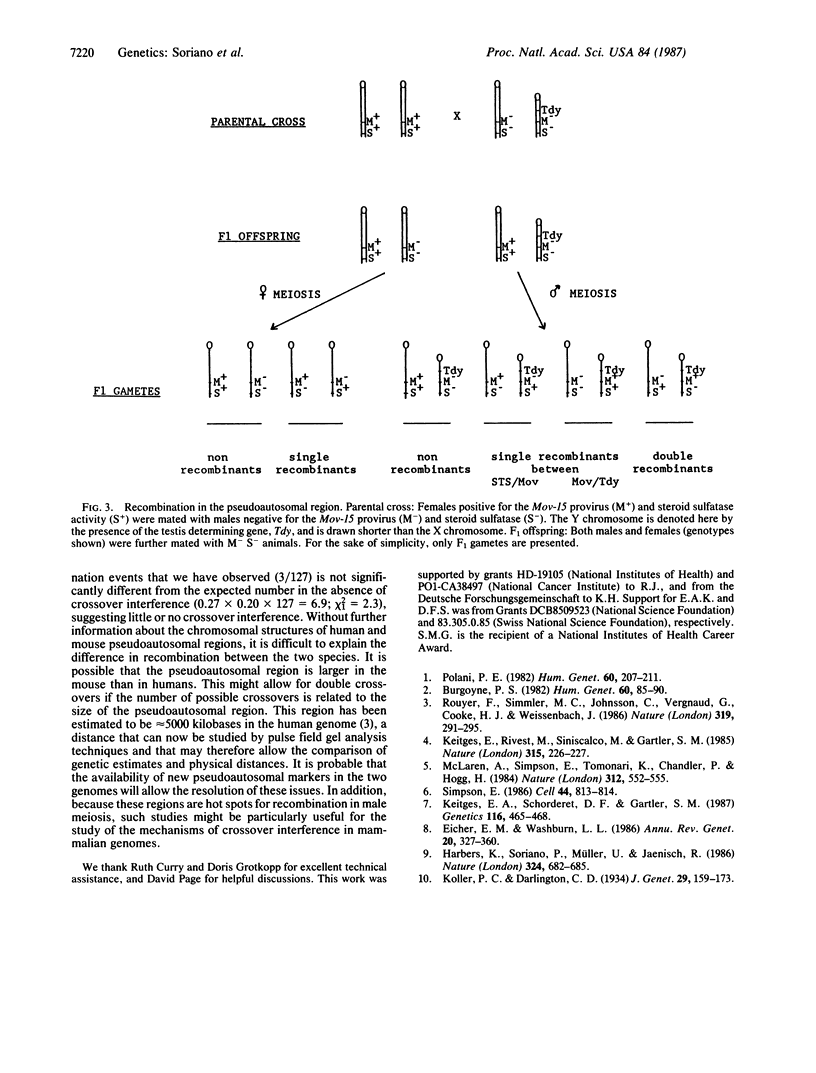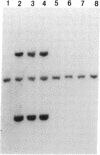Abstract
The recombination rate in meiosis between the mouse X and Y chromosomes was analyzed. Mice heterozygous at two pseudoautosomal alleles, the steroid sulfatase gene and the Mov-15 provirus marker, were crossed. The provirus in the Mov-15 transgenic mouse strain had been previously shown to be carried in the pseudoautosomal region of the sex chromosomes. Recombination frequencies were shown to be 7-fold higher in this region in male meiosis than in female meiosis. Three-point crosses indicated the occurrence in male meiosis of double recombination events in the pseudoautosomal region, with little or no crossover interference, which is in marked contrast to observations made on the similar region of the human sex chromosomes. This result is contrary to a previous model, which predicted a single crossover event in male meiotic pairing of mammalian sex chromosomes.
Full text
PDF


Images in this article
Selected References
These references are in PubMed. This may not be the complete list of references from this article.
- Burgoyne P. S. Genetic homology and crossing over in the X and Y chromosomes of Mammals. Hum Genet. 1982;61(2):85–90. doi: 10.1007/BF00274192. [DOI] [PubMed] [Google Scholar]
- Eicher E. M., Washburn L. L. Genetic control of primary sex determination in mice. Annu Rev Genet. 1986;20:327–360. doi: 10.1146/annurev.ge.20.120186.001551. [DOI] [PubMed] [Google Scholar]
- Harbers K., Soriano P., Müller U., Jaenisch R. High frequency of unequal recombination in pseudoautosomal region shown by proviral insertion in transgenic mouse. Nature. 1986 Dec 18;324(6098):682–685. doi: 10.1038/324682a0. [DOI] [PubMed] [Google Scholar]
- Keitges E. A., Schorderet D. F., Gartler S. M. Linkage of the steroid sulfatase gene to the sex-reversed mutation in the mouse. Genetics. 1987 Jul;116(3):465–468. doi: 10.1093/genetics/116.3.465. [DOI] [PMC free article] [PubMed] [Google Scholar]
- Keitges E., Rivest M., Siniscalco M., Gartler S. M. X-linkage of steroid sulphatase in the mouse is evidence for a functional Y-linked allele. Nature. 1985 May 16;315(6016):226–227. doi: 10.1038/315226a0. [DOI] [PubMed] [Google Scholar]
- McLaren A., Simpson E., Tomonari K., Chandler P., Hogg H. Male sexual differentiation in mice lacking H-Y antigen. Nature. 1984 Dec 6;312(5994):552–555. doi: 10.1038/312552a0. [DOI] [PubMed] [Google Scholar]
- Polani P. E. Pairing of X and Y chromosomes, non-inactivation of X-linked genes, and the maleness factor. Hum Genet. 1982;60(3):207–211. doi: 10.1007/BF00303003. [DOI] [PubMed] [Google Scholar]
- Rouyer F., Simmler M. C., Johnsson C., Vergnaud G., Cooke H. J., Weissenbach J. A gradient of sex linkage in the pseudoautosomal region of the human sex chromosomes. Nature. 1986 Jan 23;319(6051):291–295. doi: 10.1038/319291a0. [DOI] [PubMed] [Google Scholar]
- Simpson E. The H-Y antigen and sex reversal. Cell. 1986 Mar 28;44(6):813–814. doi: 10.1016/0092-8674(86)90001-2. [DOI] [PubMed] [Google Scholar]



